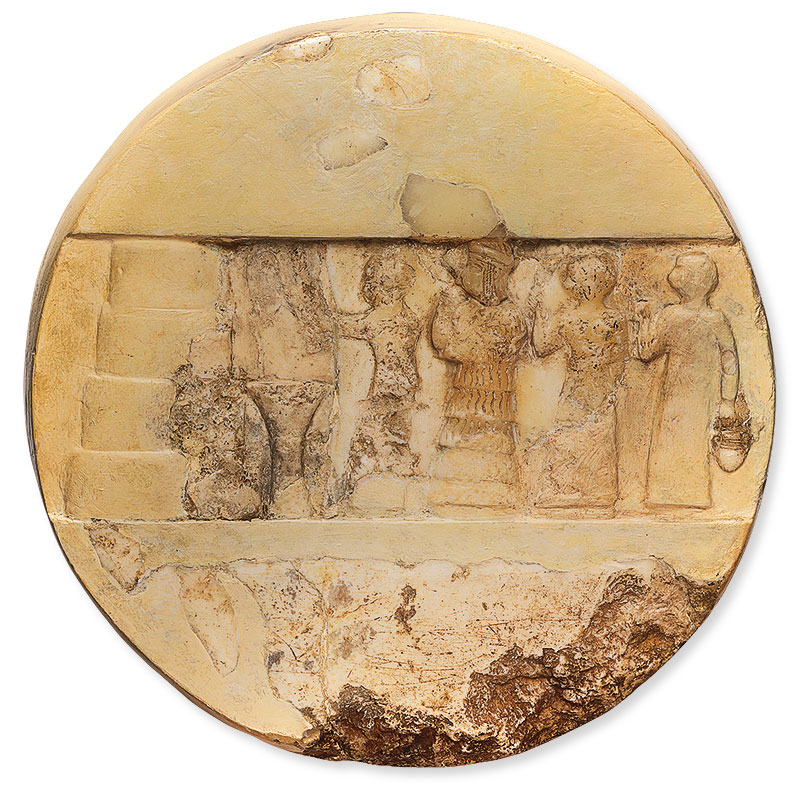
The fragmentary inscription on this disk was recovered from a copy on an Old Babylonian (ca. 1894–1595 BC) tablet, recorded hundreds of years after the disk’s dedication by Enheduanna. The scene carved on the opposite side shows an open-air sacred precinct with a multistory edifice at left. Enheduanna occupies the center, depicted slightly larger than her attendants to reflect her status. Two priests behind her carry ritual paraphernalia; the one in front of her pours a libation on an altar. Enheduanna wears a tiered, flounced garment and a headdress in the form of a circlet, both of which became canonical for her successors. Her hand gesture sanctions the ritual. Her well-sculpted visage gazes upward, from the mortal world to the numinous realm of Inanna.
Disk of Enheduanna, daughter of Sargon
Mesopotamia, Akkadian, Ur (modern Tell el-Muqayyar), gipar
Akkadian period, ca. 2300 BC
Cuneiform inscription in Sumerian: En-h[e]du-ana, zirru priestess, wife of the god Nanna, daughter of Sargon, [king] of the world, in [the temple of the goddess Inan]na-ZA.ZA in [U]r, made a [soc]le (and) named it: ‘dais, table of (the god) An.’
Alabaster
University of Pennsylvania Museum of Archaeology and Anthropology, Philadelphia, USA, Excavated 1926; B16665
Courtesy of the Penn Museum
Sidney Babcock: Excavated in Enheduanna's sacred dwelling in Ur, this alabaster disk is the only surviving artwork that records both her name and image. On one side, there are traces of a cuneiform inscription identifying Enheduanna as the wife of the god Nanna and the daughter of King Sargon. This text was copied on a tablet centuries after her lifetime, confirming the longevity of her legacy. Thanks to that copy, we know that Enheduanna dedicated this enigmatic disk to a temple to commemorate the construction of a hallowed dais.
The carving on the other side shows a ritual taking place before a stepped edifice. Enheduanna is at the center, depicted taller than the priests accompanying her. She wears a flounced garment and a headdress in the form of a circlet, both of which became characteristic features of high priestesses for centuries to come. The priest before her is pouring a libation over an altar, while Enheduanna is overseeing this ceremony and sanctioning it with her hand gesture. By doing so, she is continuing a ritual established in the cult practices of the Sumerians as represented by the frontally depicted woman on the wall plaque described in Stop 10, exhibition object number 41. Her well-sculpted visage gazes upward, from the world of the mortals to that of the divine.
